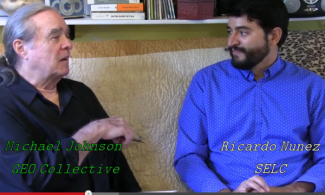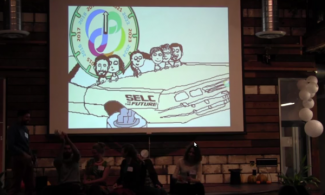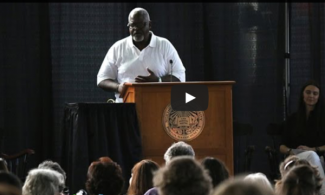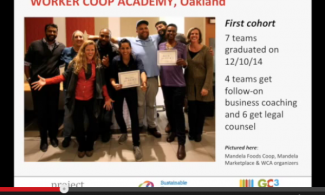I wasn't able to sit through the entire presentation, however, I wanted to capture as much as I could of this interesting presentation about the ability of labor unions and worker cooperatives to co-exist and to thrive.
Mary Hoyer, Martha Vader and Liz Ryder presented on their work on the Union-Coop committee. This group was intiated by the Eastern Worker Cooperative Conference and transferred to the US Federation of Worker Cooperatives in 2008. Its mission is to work towad the visio of a worker driven cooperative economy, with workplace and economic democracy for all. the primary focus is building bridges between the cooperative and labor movements, locally, regionally, nationally, and internationally.
Martha Vader works with the California Labor Federation. She described herself as a newly minted worker cooperative enthusiast (yay!!)
She works for a statewide organization. While it is part of the labor federation, they are concerned about all workers. They are grant funded to support job training, layoff aversion, and training partnerships.
Lay off aversion means saving jobs. Traditionally, unions try to find a way to keep the jobs and examine the options to save the plant. This has created a concept of creating pathways to good jobs.
She spoke of some of the aspects of the challenges to organizing. The Green Economy has offered new opportunities. highly fluid business sectors. In addition, there are unusual sectors with structural issues--public sectors outsourcing, construction unions with low wages.
What has changed in the landscape between unions and coops? The Economy has created a situation with we are all in it together. Attitudes and leaders have shifted. Many barriers have chaned with time. Mostly, there is a shift in attitude towards other models of economic security. This has created new ground work for labor to work with and find new allies. Of course, some jurisdictional issues are real and there are culture issues on both sides of the equation. finally there is a lack of technical understanding.
My comment: We can work these issues out. We have more to gain from each other than we have to lose to each other
Liz Ryder was the next to speak . She noted that labor unions, like worker cooperatives, are not a monolithic group. They exist in heavy industry, professional, construction, and public employees. Liz works with the public sector which raises a big issue. One of the challenges that public employee's face is the contracting out of work. This is a fairly important issue because the pay and benefits inside the system are very good. Unions do not want to lose that battle. When they do, they end up having to fight the contractor who is often an international corporation with a huge war chest to fight the organization attempt. An alternative concept, would be to create a worker cooperative to bid for the job. This would benefit the community since it keeps jobs in the community as well as any profits. AFSCME could assist this through leadership training and other means such as lobbying the legislative body (another strength for labor unions). AFSCME has been experimenting with non-traditional work forces around child care and home care, this has helped them to start thinking of different concepts about work. This would require a local organizing effort as the International focus tends to require a greater scale of workers to get a decent return on the organizing investment. The benefit to the unions come from growing and expanding the union without the financial and social costs of fighting off an anti-union campaign.
Deborah Olson presented a strategy for creating jobs. She noted that only two sources of worker protection: labor unions and worker cooperatives. She operates a non-profit group called Community Based Enterprise (CBE): they are sustainable, locally rooted, intentiaonlayy sturctured to provide community benefits and committed to paying a living wage. In the US, there are 11 million workers working in some sort of employee ownership scheme (ESOPS, coops, LLCs, etc). She gave some examles of how unionization and employee ownership can work.
Unfortunately, I had to leave at this point and sadly missed Gary Holloway and his discussion of the US Steelworkers and Mondragon relationship--hopefully another one of our bloggers will jump into the discussion (or perhaps one of the presenters).





Add new comment